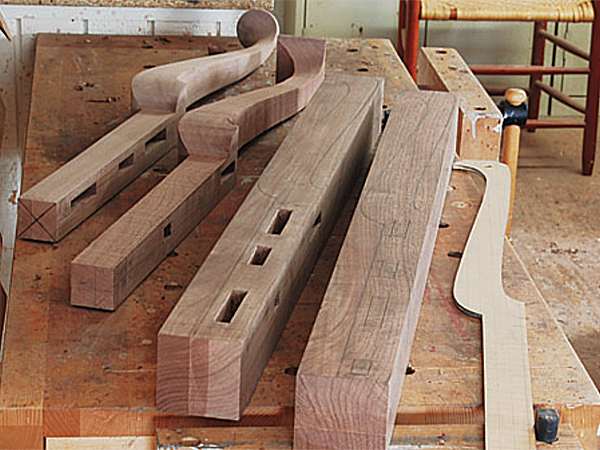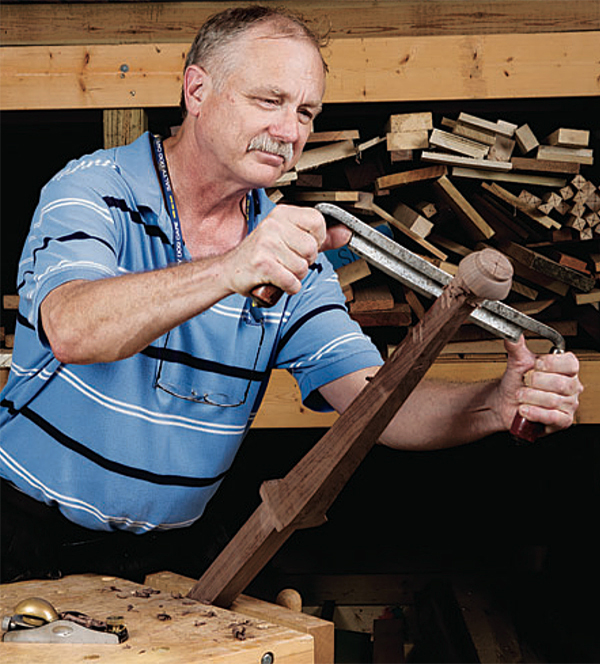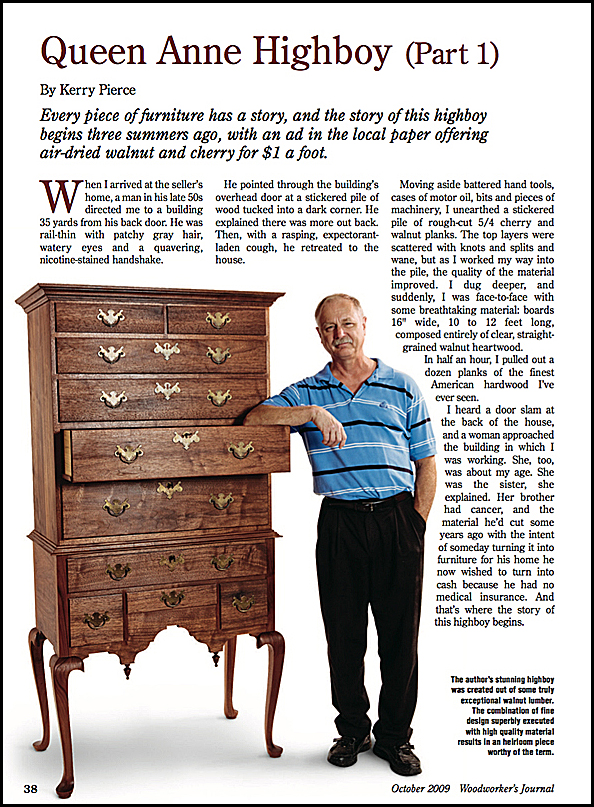
I have always liked the look of a cabriole leg and wanted to try and make one. I have seen countless shows laying out the leg. The instructions have always been: “Lay your template on the blank and trace, being sure to orient the template properly on each face.” There has got be some formula to make the template because I know they weren’t traced from that first template. Somehow there has to be a way to lay one out to match the size of each project. Could you have someone walk me through the process? – Butch Ostman
Tim Inman: Cabriole legs are “stylized,” not “formulized” furniture motifs. Can you say that? What I mean is that the classical cabriole leg is an artistic motif based upon a stylized model of an animal and a theme. They are commonly seen in many reiterations over centuries, but most commonly in 1700s and 1800s fine furniture. Historically, the motif resembles the leg of a goat crouched and ready to jump. The foot is sometimes referred to as a “bun and pad” and sometimes as a “ball and claw” motif. The ball is thought to represent a dragon holding the “pearl of wisdom.” Queen Anne furniture typically shows a more subtle and elongated shape with a softer bun and pad foot. Chippendale, on the other hand, shows sharply defined lines and a dragon’s clawed toes holding the pearl. Queen Anne cabrioles are typically much more elongated. Some Chippendale legs are so “crouched” they seem like they might be ready to fold in on themselves. It is all about art, not about math.
Chippendale cabrioles are classically made with a band saw and templates as I think you are attempting to do. Queen Anne cabrioles were actually turned on a lathe – by hand! Allan Batty, who unfortunately just passed away in July of this year, demonstrates this in one of his videos. He was one of the last of the true “tradesmen turners” who made these as a journeyman turner working for a living – not as a furniture artist. I hope this helps you in your design quests for the “perfect” cabriole for your project.

Chris Marshall: In the October and December 2009 print issues of our magazine, Kerry Pierce built a beautiful Queen Anne walnut highboy in a two-part article series. While he doesn’t cover the basics of designing a cabriole leg for any project, as you’d like to learn how to do for your projects, Butch, he does cover the process for making the legs on this highboy in quite a bit of detail, with drawings and photos. And Kerry is an expert at the style. You can access the two-part series for free in the archives of our Premium Content section if you are a paying subscriber to Woodworker’s Journal. It’s worth the read!






